Login
Subscribecytokines

How Cells in the Skin Team Up To Fight Pathogens
Rachael Moeller Gorman | Apr 12, 2023 | 4 min read
Immune cells and pain neurons form complex partnerships to protect our bodies from pathogens, new research reveals.

Gut Bacteria Help T Cells Heal Muscle: Study
Natalia Mesa, PhD | Mar 14, 2023 | 4 min read
Regulatory T cells in the colon travel to muscles to promote wound healing in mice, raising questions about how antibiotics may impact injury recovery.
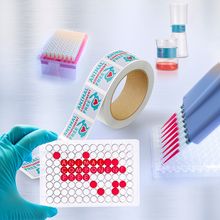
Animal Component-Free Reagents Unleash Cell Culture’s True Potential
The Scientist and MilliporeSigma | 3 min read
The latest synthetic and chemical reagents offer researchers more flexibility, stability, and consistency when working with their cells.

Opioids Recruit the Immune System to Cause Withdrawal Symptoms
Dan Robitzski | Jan 25, 2023 | 6 min read
A study finds that T cells induced by heroin cross the blood-brain barrier to wreak havoc on the brain, hinting at new ways to prevent withdrawal.
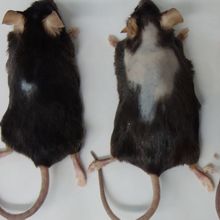
Fish Oil in Diet Can Cause Hair Loss in Mice, Study Finds
Katherine Irving | Jan 19, 2023 | 3 min read
The oil’s omega-3 fatty acids accumulate in the mice’s skin, triggering an immune response that causes hair loss.
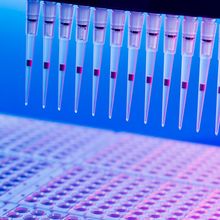
Bringing Fluency to Clinical Diagnostics Through Automation
Tecan | 1 min read
Automated liquid handling workstations offer flexibility for a wide range of application and process needs.

Why Viral Infections Are More Severe in People with Down Syndrome
Andy Carstens | Oct 14, 2022 | 6 min read
In people with the genetic condition, inflammation can cause a mild infection to snowball out of control, a study finds.

How Exercise Helps Mice Fight Pancreatic Cancer
Dan Robitzski | Jun 15, 2022 | 5 min read
A study reveals a molecular pathway linking exercise to an amped-up immune response to pancreatic cancer and greater responsiveness to treatment.
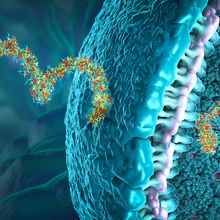
Advancing CAR T Cell Research and Development
Bio-Rad | 1 min read
How to develop the best CAR T cell product for preclinical use.

Growing Evidence Ties COVID-19 to Diabetes Risk
Bianca Nogrady | May 3, 2022 | 7 min read
Studies suggest SARS-CoV-2 infection could trigger the development of diabetes in some people, even those with no other risk factors.

Does Biological Sex Influence COVID-19 Outcomes?
Annie Melchor | Nov 2, 2021 | 10 min read
It’s unclear whether differing odds of dying between men and women reflect inherent differences between male and female immune systems or differences rooted in gender norms.

Retraining the Immune System Cavalry for Food Allergen Peacekeeping Missions
The Scientist | 1 min read
Explore food allergy immunotherapy for reversing patient symptoms.

Bacterial Infections Disrupt Flies’ Sense of Smell
Abby Olena, PhD | Jul 21, 2021 | 4 min read
The temporary loss of olfaction stops the flies from eating any more of whatever it is that made them sick.

Spleen-to-Liver Signals Control Systemic Inflammation
Ruth Williams | Apr 29, 2021 | 3 min read
In rats, the spleen directs a cytokine surge that drives system-wide inflammation, but it is not, as once believed, the main producer of the chemical messenger.
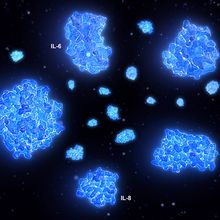
The Next Generation of Immunoassays Support COVID-19 Research
The Scientist Creative Services Team in collaboration with Bio-Techne | 3 min read
An automated, microfluidic immunoassay system enables researchers to quickly and reliably measure cytokines in patient blood samples.

Key Genes Related to Severe COVID-19 Infection Identified
Max Kozlov | Dec 14, 2020 | 3 min read
Differences in the expression of genes associated with antiviral immunity and lung inflammation may contribute to a more serious COVID-19 infection.
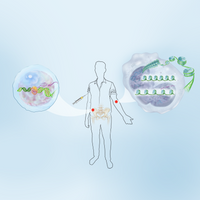
Infographic: How Vaccines Train Innate Immunity
Shawna Williams | Nov 1, 2020 | 1 min read
A recent study elucidates some of the changes that occur in the body after inoculation with a tuberculosis vaccine.
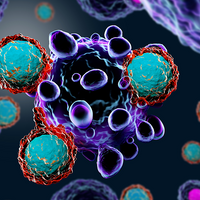
Advancing Cancer Biomarker Detection with Single Cell Proteomics
The Scientist Creative Services Team in Collaboration with IsoPlexis | 2 min read
An improved ELISA-based proteomics chip detects cytokines in single cell applications.

Decoy Cells Trick SARS-CoV-2, Reduce Cytokines In Vitro
Max Kozlov | Oct 14, 2020 | 4 min read
Genetically engineered cells that overproduce ACE2, the receptor the novel coronavirus uses to enter cells, neutralize infection in vitro and mop up inflammatory cytokines in mice.
